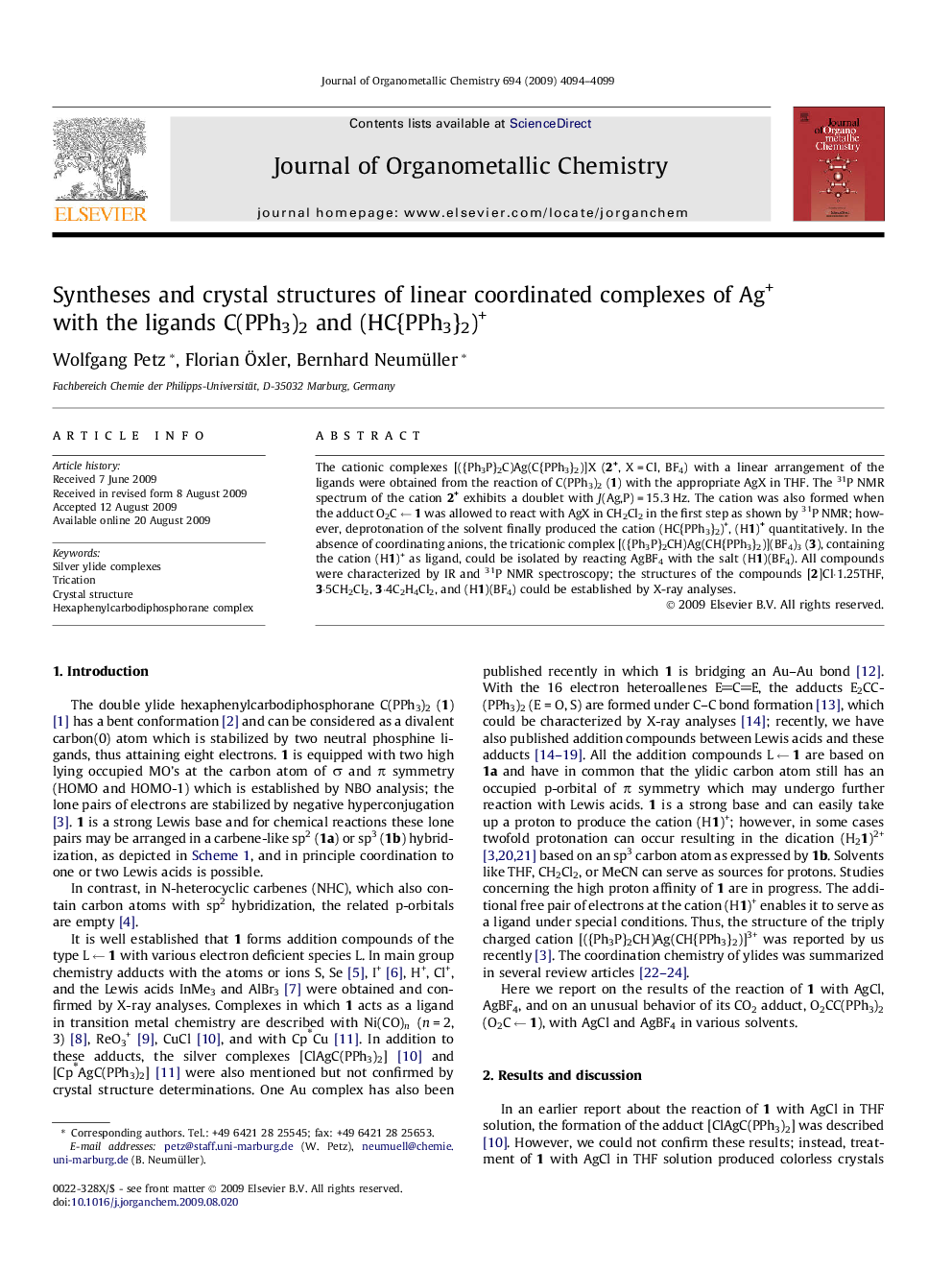| Article ID | Journal | Published Year | Pages | File Type |
|---|---|---|---|---|
| 1324375 | Journal of Organometallic Chemistry | 2009 | 6 Pages |
The cationic complexes [({Ph3P}2C)Ag(C{PPh3}2)]X (2+, X = Cl, BF4) with a linear arrangement of the ligands were obtained from the reaction of C(PPh3)2 (1) with the appropriate AgX in THF. The 31P NMR spectrum of the cation 2+ exhibits a doublet with J(Ag,P) = 15.3 Hz. The cation was also formed when the adduct O2C ← 1 was allowed to react with AgX in CH2Cl2 in the first step as shown by 31P NMR; however, deprotonation of the solvent finally produced the cation (HC{PPh3}2)+, (H1)+ quantitatively. In the absence of coordinating anions, the tricationic complex [({Ph3P}2CH)Ag(CH{PPh3}2)](BF4)3 (3), containing the cation (H1)+ as ligand, could be isolated by reacting AgBF4 with the salt (H1)(BF4). All compounds were characterized by IR and 31P NMR spectroscopy; the structures of the compounds [2]Cl·1.25THF, 3·5CH2Cl2, 3·4C2H4Cl2, and (H1)(BF4) could be established by X-ray analyses.
Graphical abstractThe double ylide C(PPh3)2 (1) has two lone pairs of free electrons and reacts with AgX (X = Cl, BF4) in THF to afford the cationic complex [2]+ in which 1 acts as a two electron donor. The deprotonated complex [3]3+, where 1 provides four electrons, results upon reaction of the salt (H1)BF4 with AgBF4. In both complexes a linear C–Ag–C array is achieved as proved by X-ray analyses.Figure optionsDownload full-size imageDownload as PowerPoint slide
